Robert Westendorp
Passive Indoor Localization with WiFi Fingerprints
Nov 29, 2021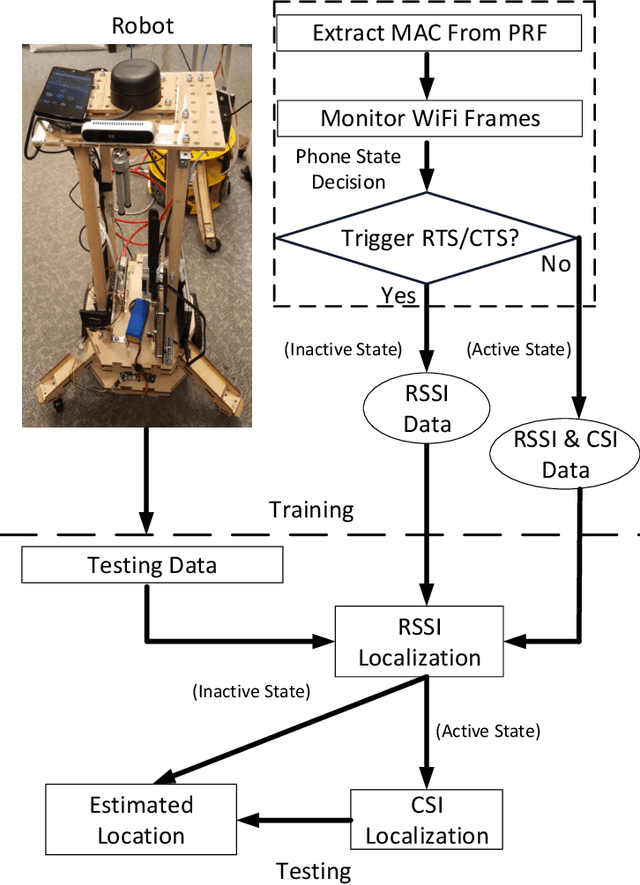
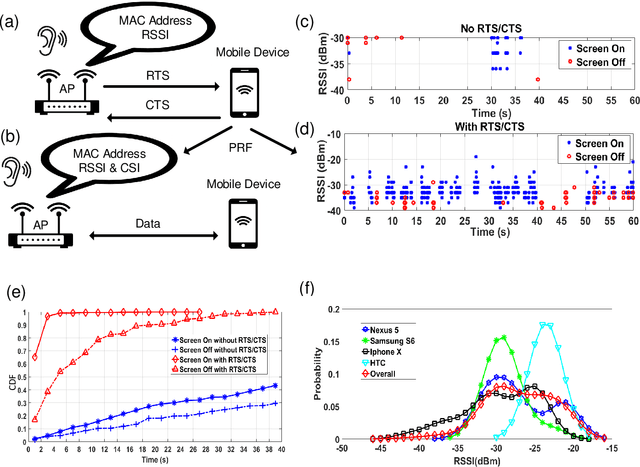
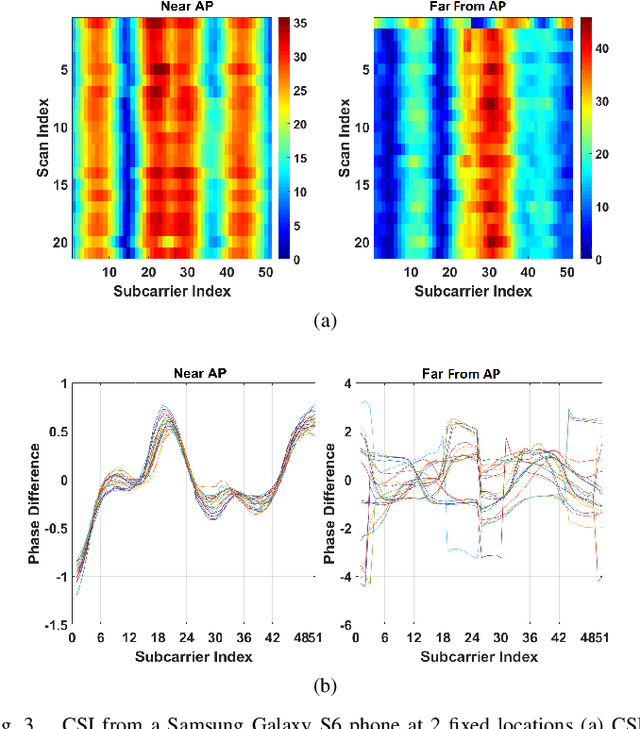
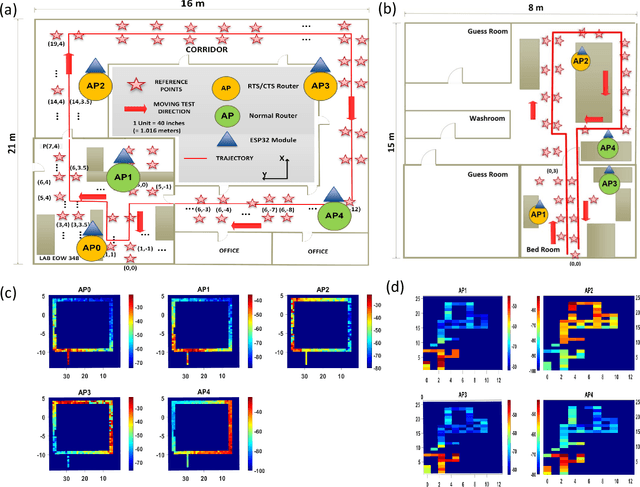
Abstract:This paper proposes passive WiFi indoor localization. Instead of using WiFi signals received by mobile devices as fingerprints, we use signals received by routers to locate the mobile carrier. Consequently, software installation on the mobile device is not required. To resolve the data insufficiency problem, flow control signals such as request to send (RTS) and clear to send (CTS) are utilized. In our model, received signal strength indicator (RSSI) and channel state information (CSI) are used as fingerprints for several algorithms, including deterministic, probabilistic and neural networks localization algorithms. We further investigated localization algorithms performance through extensive on-site experiments with various models of phones at hundreds of testing locations. We demonstrate that our passive scheme achieves an average localization error of 0.8 m when the phone is actively transmitting data frames and 1.5 m when it is not transmitting data frames.
Pose-GNN : Camera Pose Estimation System Using Graph Neural Networks
Mar 17, 2021
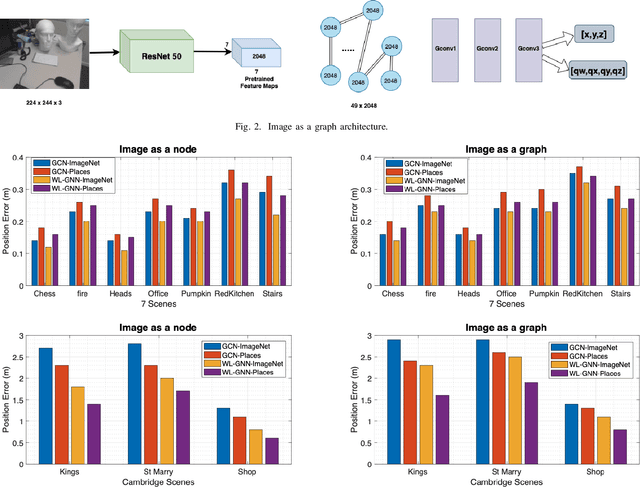


Abstract:We propose a novel image based localization system using graph neural networks (GNN). The pretrained ResNet50 convolutional neural network (CNN) architecture is used to extract the important features for each image. Following, the extracted features are input to GNN to find the pose of each image by either using the image features as a node in a graph and formulate the pose estimation problem as node pose regression or modelling the image features themselves as a graph and the problem becomes graph pose regression. We do an extensive comparison between the proposed two approaches and the state of the art single image localization methods and show that using GNN leads to enhanced performance for both indoor and outdoor environments.
A CNN-LSTM Quantifier for Single Access Point CSI Indoor Localization
May 13, 2020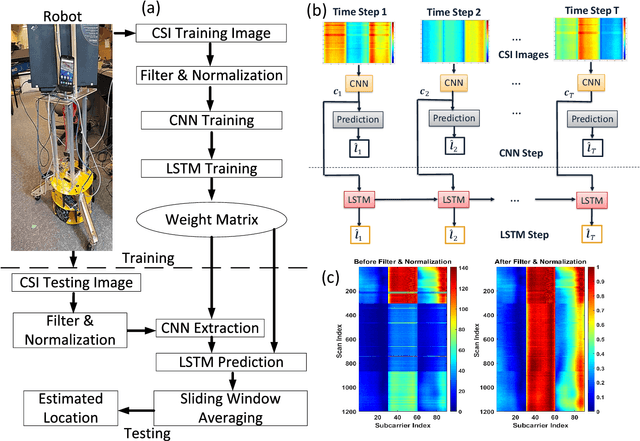
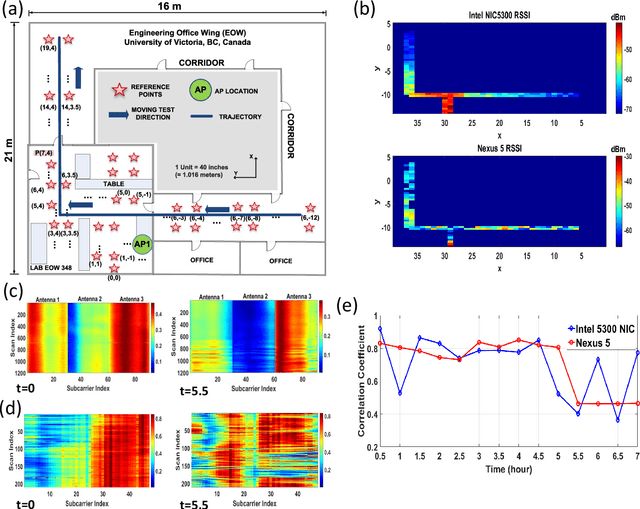
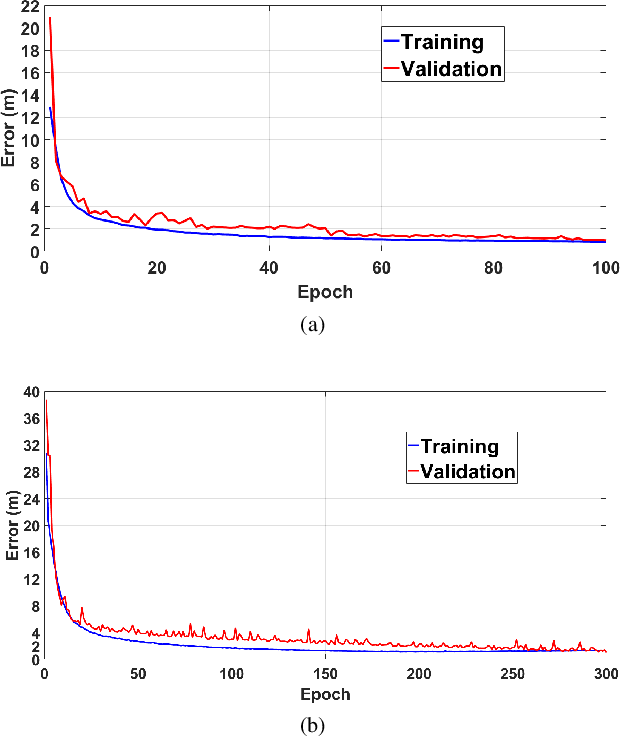
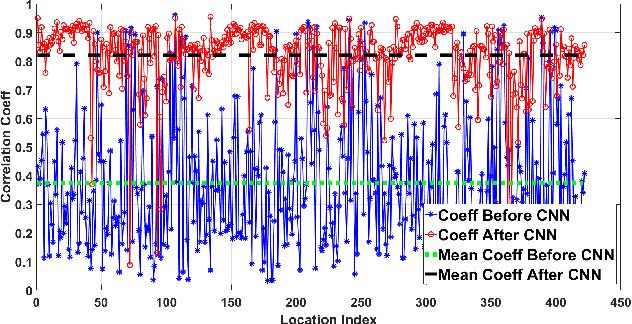
Abstract:This paper proposes a combined network structure between convolutional neural network (CNN) and long-short term memory (LSTM) quantifier for WiFi fingerprinting indoor localization. In contrast to conventional methods that utilize only spatial data with classification models, our CNN-LSTM network extracts both space and time features of the received channel state information (CSI) from a single router. Furthermore, the proposed network builds a quantification model rather than a limited classification model as in most of the literature work, which enables the estimation of testing points that are not identical to the reference points. We analyze the instability of CSI and demonstrate a mitigation solution using a comprehensive filter and normalization scheme. The localization accuracy is investigated through extensive on-site experiments with several mobile devices including mobile phone (Nexus 5) and laptop (Intel 5300 NIC) on hundreds of testing locations. Using only a single WiFi router, our structure achieves an average localization error of 2.5~m with $\mathrm{80\%}$ of the errors under 4~m, which outperforms the other reported algorithms by approximately $\mathrm{50\%}$ under the same test environment.
Semi-Sequential Probabilistic Model For Indoor Localization Enhancement
Jan 08, 2020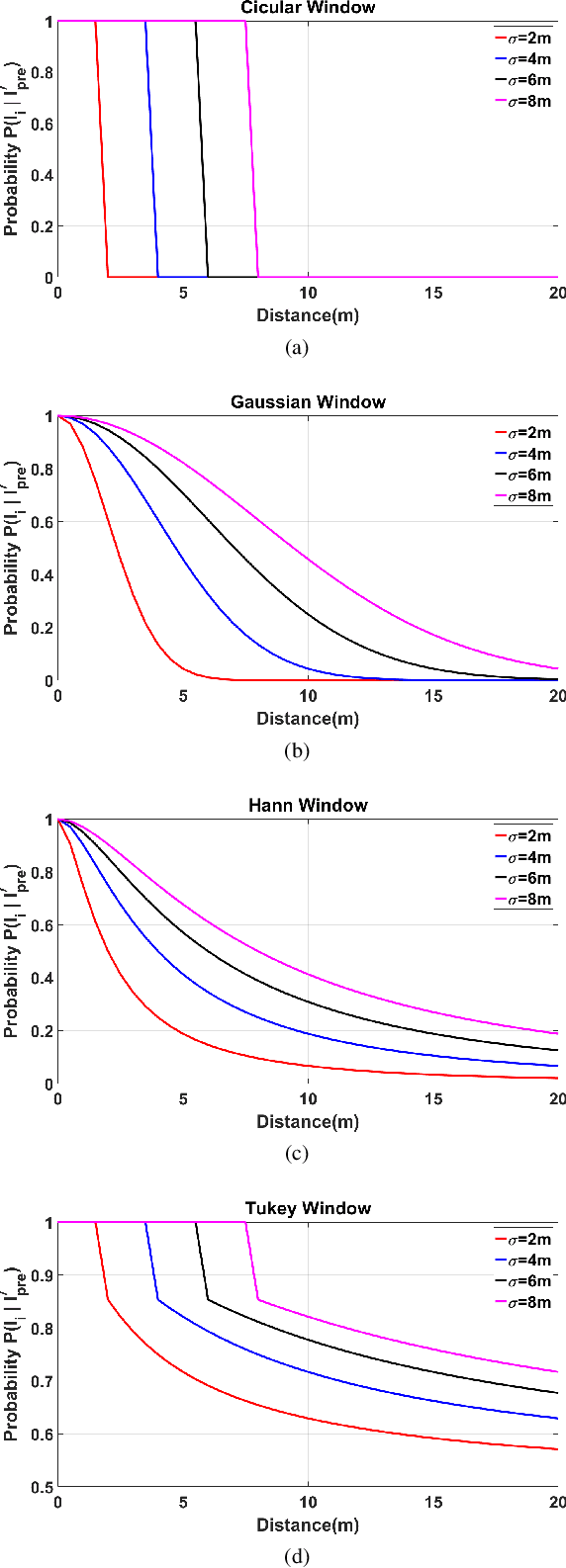
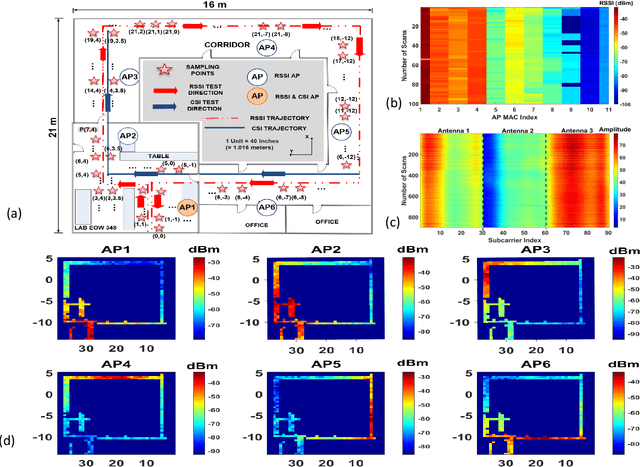
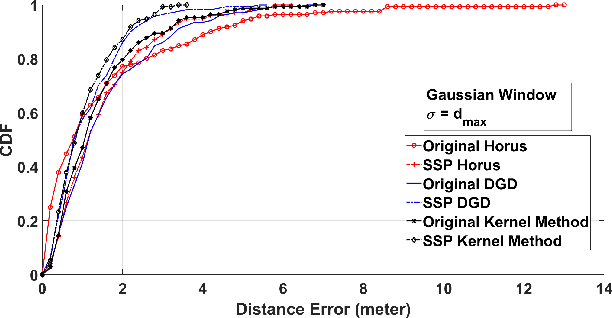
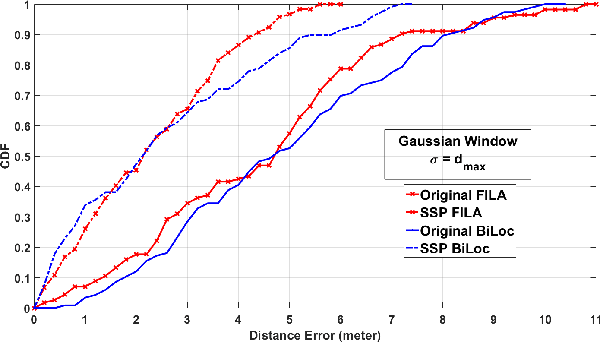
Abstract:This paper proposes a semi-sequential probabilistic model (SSP) that applies an additional short term memory to enhance the performance of the probabilistic indoor localization. The conventional probabilistic methods normally treat the locations in the database indiscriminately. In contrast, SSP leverages the information of the previous position to determine the probable location since the user's speed in an indoor environment is bounded and locations near the previous one have higher probability than the other locations. Although the SSP utilizes the previous location information, it does not require the exact moving speed and direction of the user. On-site experiments using the received signal strength indicator (RSSI) and channel state information (CSI) fingerprints for localization demonstrate that SSP reduces the maximum error and boosts the performance of existing probabilistic approaches by 25% - 30%.
Multi-Resolution Overlapping Stripes Network for Person Re-Identification
Oct 27, 2019



Abstract:This paper addresses the person re-identification (PReID) problem by combining global and local information at multiple feature resolutions with different loss functions. Many previous studies address this problem using either part-based features or global features. In case of part-based representation, the spatial correlation between these parts is not considered, while global-based representation are not sensitive to spatial variations. This paper presents a part-based model with a multi-resolution network that uses different level of features. The output of the last two conv blocks is then partitioned horizontally and processed in pairs with overlapping stripes to cover the important information that might lie between parts. We use different loss functions to combine local and global information for classification. Experimental results on a benchmark dataset demonstrate that the presented method outperforms the state-of-the-art methods.
Recurrent Neural Networks For Accurate RSSI Indoor Localization
Mar 27, 2019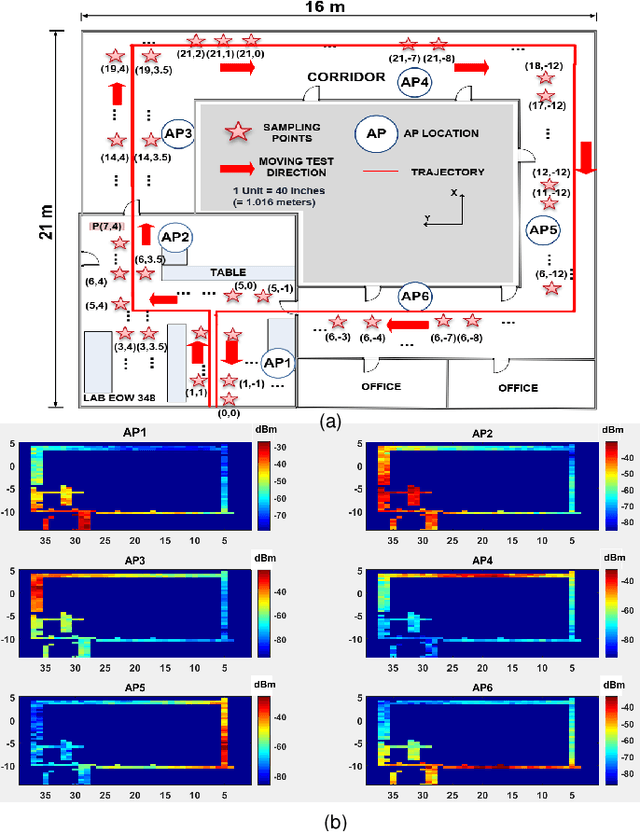
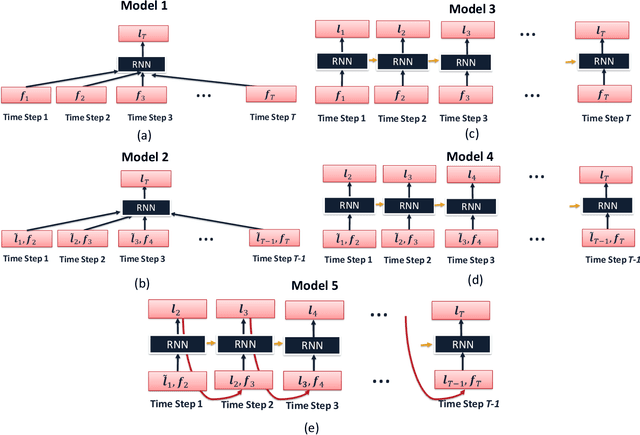
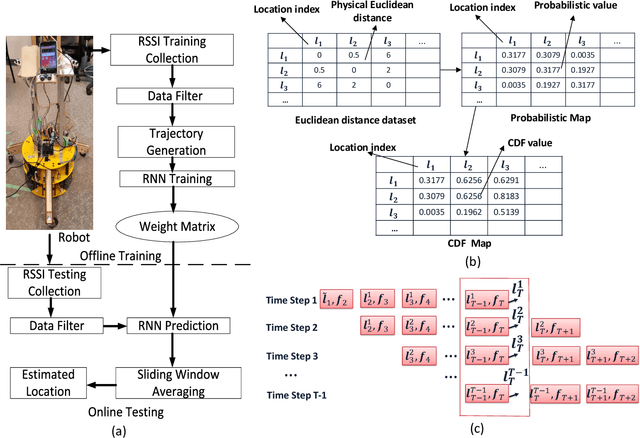
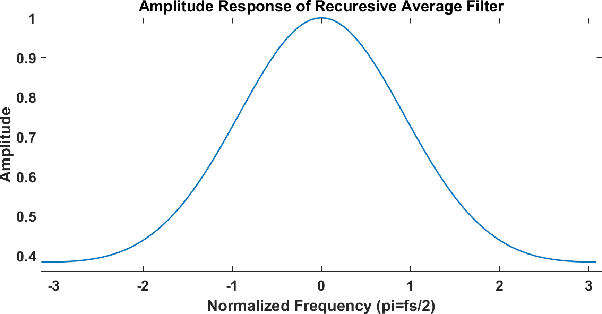
Abstract:This paper proposes recurrent neuron networks (RNNs) for a fingerprinting indoor localization using WiFi. Instead of locating user's position one at a time as in the cases of conventional algorithms, our RNN solution aims at trajectory positioning and takes into account the relation among the received signal strength indicator (RSSI) measurements in a trajectory. Furthermore, a weighted average filter is proposed for both input RSSI data and sequential output locations to enhance the accuracy among the temporal fluctuations of RSSI. The results using different types of RNN including vanilla RNN, long short-term memory (LSTM), gated recurrent unit (GRU) and bidirectional LSTM (BiLSTM) are presented. On-site experiments demonstrate that the proposed structure achieves an average localization error of $0.75$ m with $80\%$ of the errors under $1$ m, which outperforms the conventional KNN algorithms and probabilistic algorithms by approximately $30\%$ under the same test environment.
 Add to Chrome
Add to Chrome Add to Firefox
Add to Firefox Add to Edge
Add to Edge